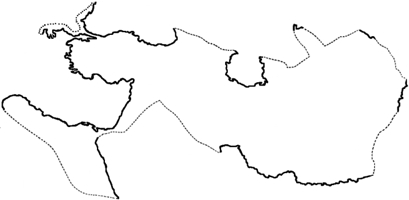
|
The Society of Folk Dance Historians (SFDH) Persia
[
Home |
About |
Encyclopedia | CLICK IMAGE TO ENLARGE |

|
BACKGROUND
Information: An empire.
The first dynasty of the Persian Empire was created by Achaemenids, established by Cyrus the Great in 550 BCE with the conquest of Median, Lydian, and Babylonian empires. It covered much of the Ancient world when it was conquered by Alexander the Great. From 247 BCE to 224 CE, Persia was ruled by the Parthian Empire, which supplanted the Hellenistic Seleucid Empire, and then by the Sassanian Empire, which ruled up until the mid-7th century.
The Persian Empire in the Sasanian era was interrupted by the Arab conquest of Persia in 651 CE, establishing the even larger Islamic caliphate, and later by the Mongol invasion. The Safavid Empire was the first Persian Empire established after the Arab conquest of Persia by Shah Ismail I. From their base in Ardabil, the Safavid Persians established control over parts of Greater Persia/Iran and reasserted the Persian identity of the region, becoming the first native Persian dynasty since the Sasanian Empire to establish a unified Persian state. Literature, art, and architecture flourished in the Safavid era once again, and it is often cited as the "rebirth of the Persian Empire."
The ancient Persians were a nomadic branch of the ancient Iranian population that entered the territory of modern-day Iran by the early 10th century BCE. Together with their compatriot allies, they established and ruled some of the world's most powerful empires, well-recognized for their massive cultural, political, and social influence covering much of the territory and population of the ancient world. Modern Persians are an Iranian ethnic group that make up over half the population of Iran.
Location: Persia refers to any of a series of imperial dynasties that were centered in Persia/Iran from the 6th century BCE Achaemenid Empire era to the 20th century CE in the Qajar dynasty era.
Language: Persians share a common cultural system and are native speakers of the Persian language, as well as closely related languages.
Religion: The main religion of ancient Persia was the native Zoroastrianism, but after the seventh century, it was slowly replaced by Islam which achieved a majority in the 10th century. Safavids also announced Shia Islam as the official religion in the empire versus the Sunni Islam in the neighboring Ottoman Empire.
DOCUMENTS
- Asia, a region.
- Europe, a region.
- Middle East, a region.
This page © 2018 by Ron Houston.
Please do not copy any part of this page without including this copyright notice.
Please do not copy small portions out of context.
Please do not copy large portions without permission from Ron Houston.